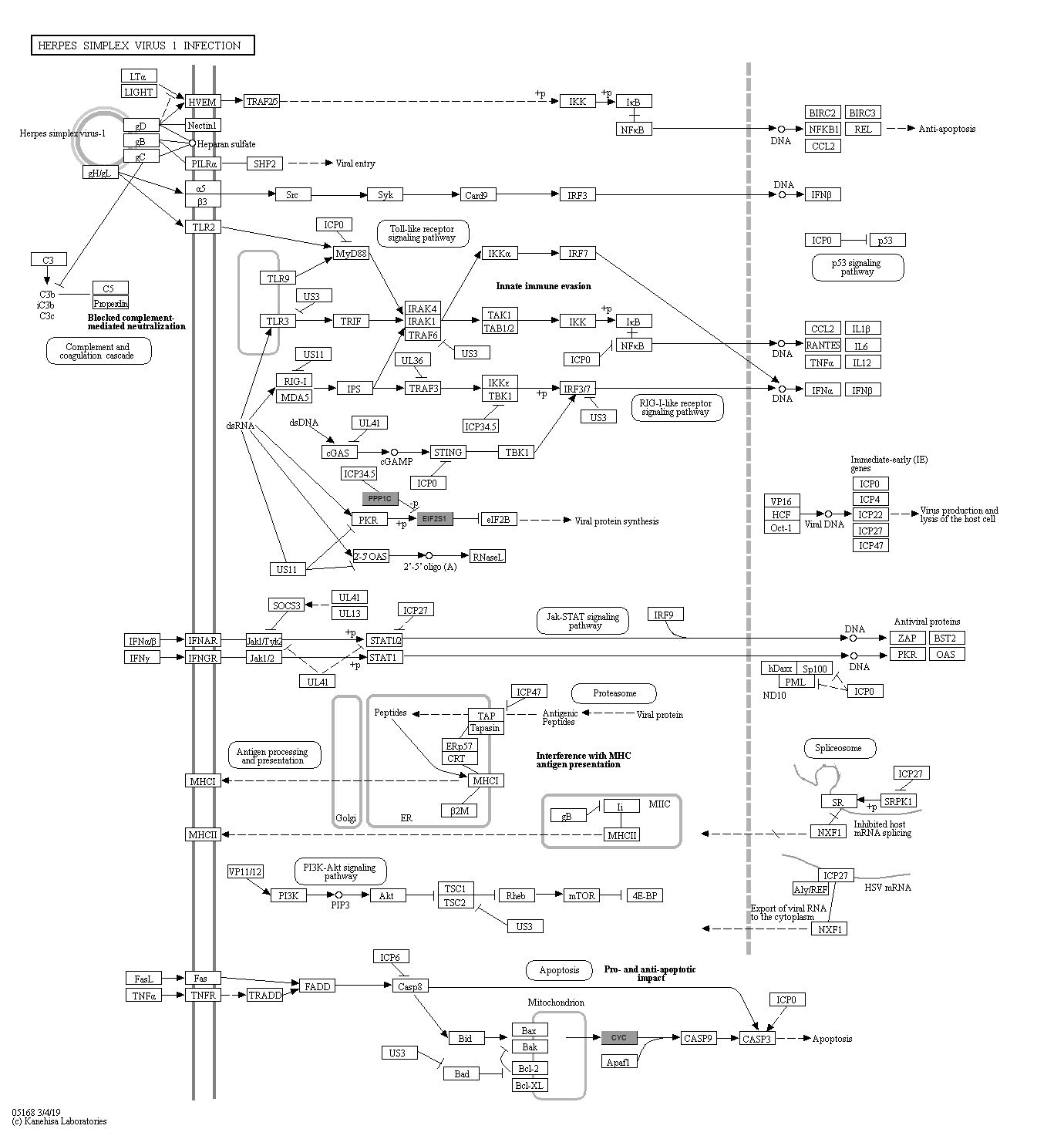|
Herpes simplex virus 1(HSV-1) is a common human pathogen, which initially infects orofacial mucosal surfaces. The virus replicates in epithelial cells at these sites, causing clinically overt disease characterized by vesicular lesions. HSV-1 then penetrates to the nervous system and establishes latency in sensory neurons. Throughout the lifetime of the host, HSV-1 may reactivate from its latent state and reinitiate a lytic infection cycle. HSV-1 has developed various mechanisms to escape its host innate immune responses and increased its capacity to replicate and to persist. ICP34.5, ICP0, ICP27, Us11 and Vhs (UL41) are the proteins involved in viral interference.
|
 Herpes simplex virus 1 infection - Reference pathway
Herpes simplex virus 1 infection - Reference pathway

 Herpes simplex virus 1 infection - Reference pathway
Herpes simplex virus 1 infection - Reference pathway

